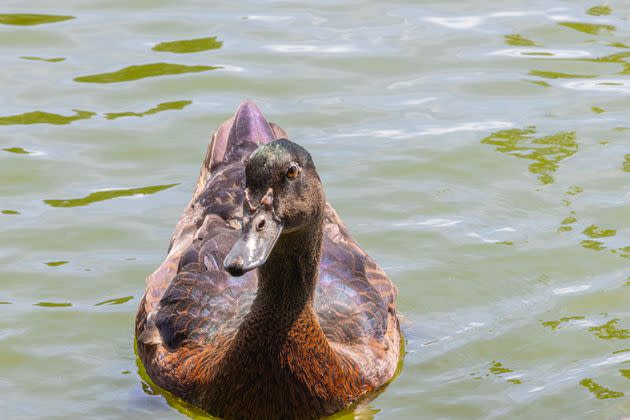Learning What Ducks Do When They’re Bored Has Ruined My Day

Aren’t ducks just so cute? Gently floating on lakes and ponds on sunny spring days while passersby feed them bits of bread and vegetables? Making sweet honking sounds as the breeze goes through their delicate feathers?
Well, listen up because I’m about to ruin your day. I’m sorry but if I had to know this, you did too.
Some ducks, when they get bored take the Hannibal Lecter approach to life and uh, turn to cannibalism.
Yes, really, ducks are cannibals
According to the New South Wales Department of Primary Industries: “Although cannibalism can begin in ducks of any age, ducklings over 4 weeks old are more prone to develop this vice.
“The underlying reasons for birds turning to cannibalism are not known, but it is associated with boredom ”
In fact, Ross Pomeroy, a writer at RealClearScience, described his experience of witnessing this horror show.
He was working as an assistant zookeeper at Sibley Park Zoo when it happened. He said: “A scene of turmoil lay before my eyes. The expecting male and female Mallards were quacking and flapping after a large white Muscovy that had something white and round in his mouth.
“It was one of their eggs. Throwing it down, the male Muscovy cracked the egg open and bit down on the fully formed chick within. With a snapping upturn of his head, he then swallowed the duckling whole.”
According to the University of Nebraska-Lincoln, when this happens with confined ducks, it can lead to an outbreak of cannibalistic behaviours within the flock.
Terrifying.
Why are ducks cannibals?
While this is something that comes as a result of ducks being bored, there are often other factors at play. The University of Nebraska-Lincoln said other contributors are:
Insufficient access to resources, including feed, water, perch or nesting space
Strain differences in propensity to feather peck and display cannibalism.
Dietary absences or deficiencies (example: salt deficiency)
Bright lighting
Injured birds left in the flock
Large group size
Keeping different ages or colours together
Injuries that bleed as a result of protruding cage or pen wires, enclosures in poor repair or from fighting among newly mixed birds
Diseased or birds with low body weight
Photostimulation programs designed to produce early onset of lay
Barren environments that restrict or limit behaviour, especially normal nesting and foraging behaviour
Changing the diet to a less-preferred food
I’ll never look at them the same again.

